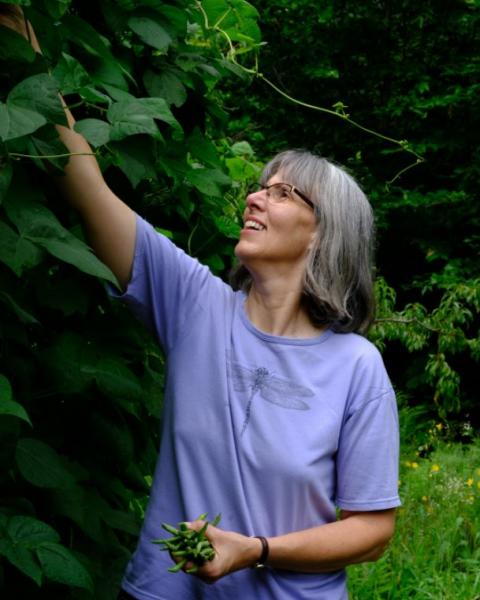Germination
7-30 days
Planting
In early spring when danger of hard frost is over, sow seeds in well-worked, fertile soil in full sun, or midsummer for fall harvest. Space seeds 4-5” apart in rows 10- 12” apart and cover seed ¼-1/2” deep. Carefully thin when seedlings are about 1” tall, to stand 10-12” apart so bulbs have room to grow and mature. Seeds can also be started indoors in a container of seed starting mix. Keep moist and provide a strong light source until seedlings are 3 or 4 inches tall and ready to transplant as above. Fennel is a heavy feeder, so fertilize every 2 to 3 weeks with a balanced fertilizer.
Harvesting
Fennel can be harvested at any time throughout the growing season. At the two-leaved stage, the seedlings make a pungent, mustardy addition to salads. The stronger tasting fennel seeds can be picked in late summer, and have a flavor like aniseed or licorice. Fennel bulbs are anise-flavored and can be prepared in a variety of ways. Dig these up after 3-4 months when they have reached 2-3” in diameter.
Description
Green fennel is a handsome and popular herb. When planted in rich soil and given plenty of water, plants develop into magnificent clumps of feathery foliage, crowned in late summer with large heads of tiny flowers. Fennel grows erect with thick roots and stout stems. The leaves grow 2-4’ long and the entire plant can reach 3’.
Profile
History
Fennel history dates back to Pliny (AD 23-79), the Roman author of The Naturalis Historie. He believed that serpents ate and rubbed against fennel because it was able to improve their eyesight after shedding their skins. Following that observation, Pliny believed fennel was so powerful that he used the aromatic herb to treat 22 different ailments. In the 1300s, fennel was a staple in the household of King Edward I of England. His wardrobe account books from 1281 list a purchase of 8 1/2 pounds of fennel seed – a month’s supply. Why so much?
Fennel seed was used as a condiment and an appetite suppressant. On Church mandated ‘Fastying dayes’, the faithful used fennel to get through the day, a tradition brought to the United States by the Puritans. They would bring handkerchiefs with fennel seed to nibble on during long services to stave off hunger, which led to fennel seeds often being referred to as ‘meetin’ seeds’. During medieval times, evil spirits were thought to roam freely as the sun turned southwards. Fennel, when hung over doorways, was thought to protect those within from the spirits.
Fennel seeds inserted into keyholes were thought to protect a dwelling from ghosts on any night but particularly Midsummer’s Eve. In the mid-1600s, one noted physician, Nicholas Culpepper also believed fennel to be an effective antidote for poisonous mushrooms and snake bites. A plaster of fennel roots was also a traditional treatment for the bites of mad dogs. In a publication from the late 1880s, Alphonse Karr tried to put claims of fennel’s healing properties to rest with his announcement, “At the end of three or four hundred years it began to be perceived that it (fennel) had never cured anyone.”
Connection to Extension
Green fennel is one of the seeds offered by Strawbery Banke Museum through our free seed for education program.
This planting guide was created through partnership among Strawbery Banke Museum, New Hampshire School & Youth Garden Network, New Hampshire Master Gardener Alumni Association and UNH Extension Master Gardeners.
